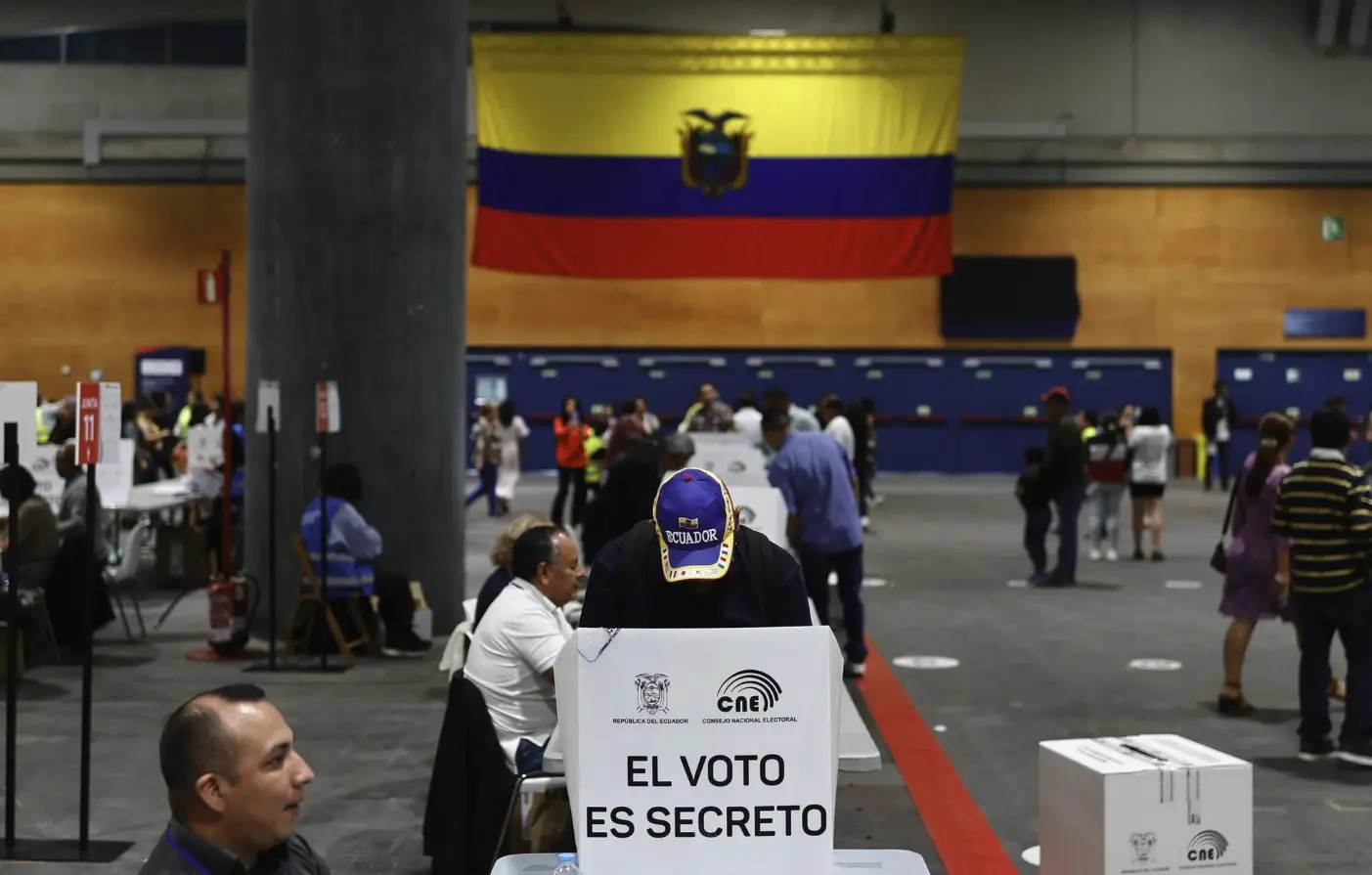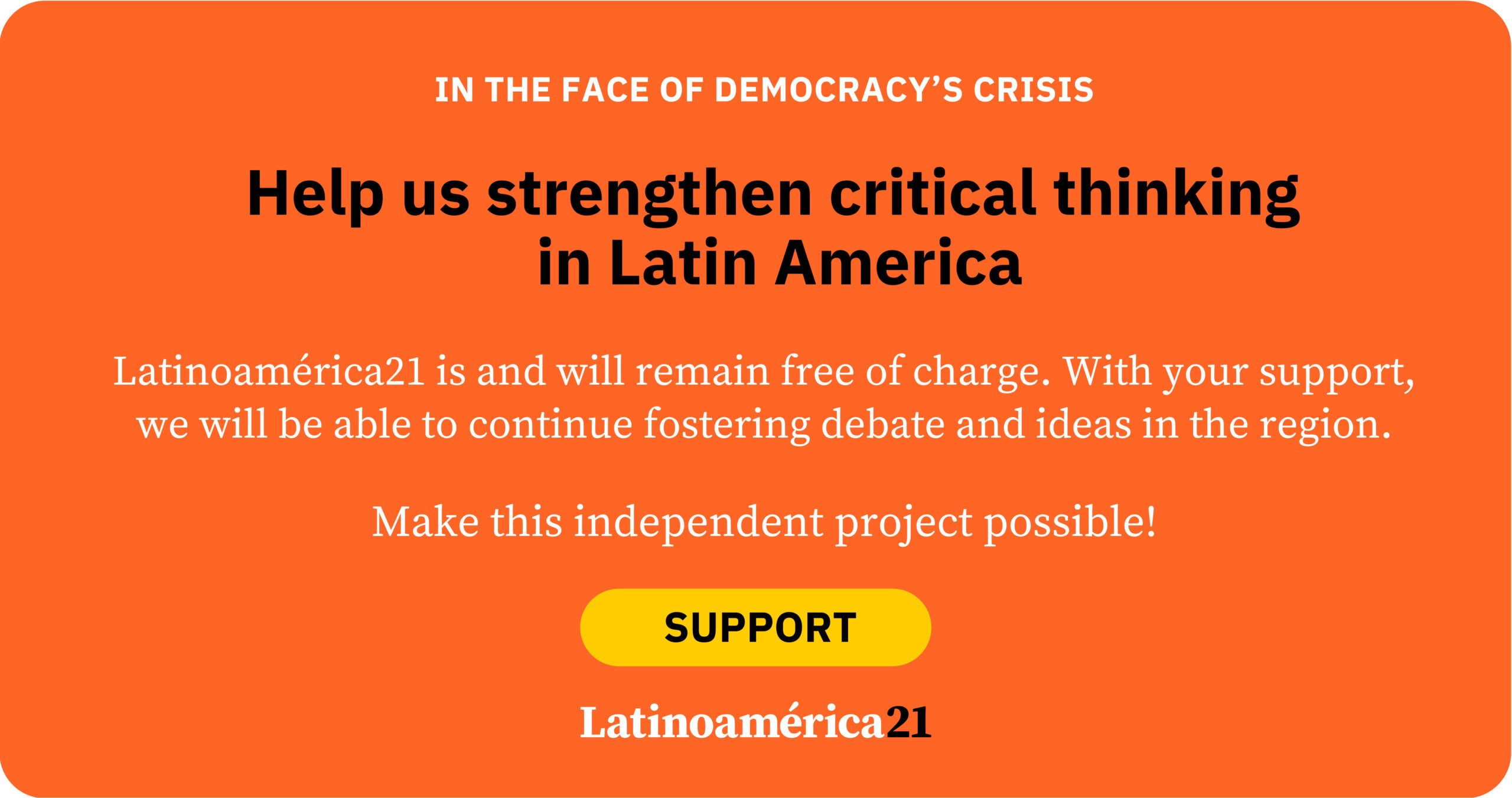This is the conclusion reached by various polling firms monitoring the electoral process. A scenario of high confrontation between the candidacy of Luisa González, from the Citizens’ Revolution (RC), the political movement affiliated with former President Rafael Correa, and Daniel Noboa, of National Democratic Action (ADN), the current president, who is seeking re-election. The outcome of this showdown will be known next Sunday, April 13. The confrontation reflects the deep political polarization dividing the country. Both candidates captured 80% of the valid votes in the first round among 16 candidates, effectively staging an early runoff. The polarization of the vote between two candidates stands in stark contrast to the high fragmentation of the social base, evident in the sheer number of political organizations (16 candidates in the first round, 232 organizations including national and local parties and movements).
In normal contexts, the second round tends to reinforce polarization. In this case, we are witnessing a heightened polarization. At least that is the conclusion drawn after the debate that took place on March 23, where the presentation of plans and programs was overshadowed by the exaltation of personal egos, previously amplified by social media. A perfect performance in which banality and spectacle replaced political discourse.
But if we dig beyond the childish and superficial confrontation, the polarization also allows us to more clearly see their differences.
In the five thematic areas—education, health, crime and security, economy and employment, and governance—the contrasts become evident. While Noboa focuses on transferring subsidies and scholarships to youth and vulnerable populations in health and education, González proposes “recovering” infrastructure and injecting more resources into these sectors.
The differentiation becomes clearer in the remaining three thematic areas. On security, Noboa’s vision favors an uncompromising stance against crime and drug trafficking; he stresses the need for funding to equip the armed forces and police, and calls for intense international cooperation, potentially including the presence of foreign military bases. The militaristic nature of this approach raises concerns about potential excesses that could infringe on fundamental rights. González’s vision emphasizes the absence of the state and public policy in affected territories; her minimal emphasis on military solutions seems aligned with the idea of reaching peace agreements with drug trafficking organizations, along lines similar to the Mexican government’s “hugs not bullets” strategy, or a revival of Rafael Correa’s initial policy of negotiating with criminal gangs.
On economy and employment, the gap is even wider. For Noboa, employment is a market and private sector responsibility, dependent on economic growth, with the private sector as the main driver; the state’s role is to create the conditions for this to happen (a liberal vision with a social-democratic orientation), with education fostering technological innovation in business through grants and incentives like student scholarships. For González, the model centers on a leading role for the state and its capacity to boost economic growth through public spending—a vision aligned with neo-Keynesian economic policy.
In terms of governance, the differences are arguably the clearest. Noboa advocates for a constitutional reform to restore the basic institutions of the rule of law undermined by the “Montecristi Constitution,” eliminate the Council for Citizen Participation (CPCCS), which took over the legislative role in nominating oversight authorities, particularly the Comptroller’s Office and the Attorney General’s Office; and reestablish the principle of separation of powers (Executive, Legislative, and Judicial), thereby restoring the rule of law and combating judicial discretion, which has allowed mafia infiltration into the justice system and the spread of narcopolitics. González, by contrast, aims to reinforce the Montecristi model through legal reforms or, eventually, a Constituent Assembly—but “at a later time.”
In all three thematic axes—especially the first two—the Gordian knot is financing: in Noboa’s case, this would be obtained through foreign (and domestic) investment, with macro-fiscal stability being key, a scenario where multilateral institutions act as guarantors of macroeconomic stability. For González, her pro-state model may appear anti-market and aimed at reducing inequalities, potentially at the expense of the business sector, which she portrays as oligarchies disconnected from the country’s development.
Noboa’s main accusation against González centers on her alleged intent to move away from dollarization and on her economic model. Public investment without access to market-based financing would inevitably require tapping into national reserves or incurring debt, which could mean using international reserves and issuing “Ecuadollars,” as suggested by two newly elected legislators from her party—measures that could structurally undermine dollarization. In Noboa’s view, dollarization is not maintained by slogans or legal frameworks but by ensuring macro-fiscal stability.
In this final week, the confrontation will become fiercer and more aggressive as both candidates vie for the 9% of the electorate that remained undecided in the first round (null and blank votes), as well as the 6.57% who supported one of the 13 minor candidates. Particularly decisive will be the fate of the vote from the Pachakutik Movement, whose candidate Leonidas Iza came in third with 5.34% of the vote. Their formal support for the Citizens’ Revolution has opened serious rifts within the Indigenous organization they represent. The results remain unpredictable.
*Machine translation proofread by Janaína da Silva.













